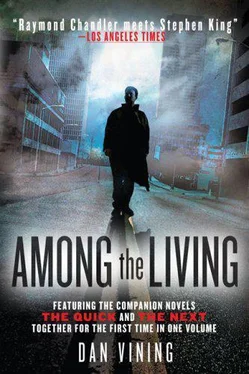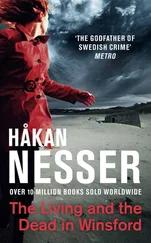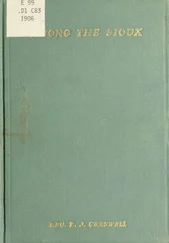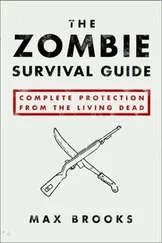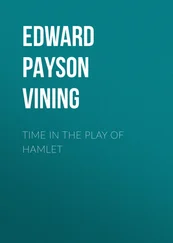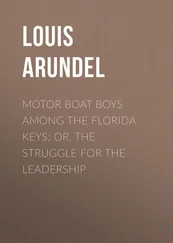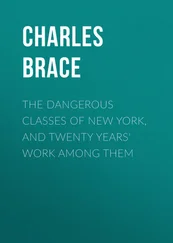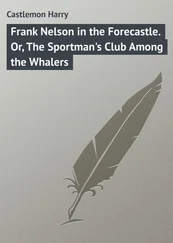An arica palm next to the house had a full head of brown fronds ready to crack off with the next real wind, but the hedges and a bird-of-paradise were hacked back and the little patch of grass out front was green so the house wasn’t abandoned exactly. Someone was dealing with it.
Jimmy stood before it a long moment and then sat on the seawall. Spanish-style houses always had a nice balance. There was a big picture window to the left, an archway, a little portico, a heavy door behind it, a door with black iron strap hinges and black iron nailheads and a “speak-easy grill” to look out at the Fuller Brush Man through, iron, too, heavy and lacy at the same time. That was Spanish. The walkway and steps were painted red to look like tile or clay.
Jimmy looked up at the second-floor window, another picture window curved at the top to match the arcs below. That was the front bedroom, where it happened. One of the pictures in the paper had a uniformed cop standing at the window, looking out, looking up for some reason, as if the murderer had somehow flown out across the canal.
Jimmy walked to the picture window and looked in. Dark drapes faded to green/gray stood open a foot. It was the living room. There were a few pieces of old furniture, what they used to call a divan, Look and Life magazines on the coffee table, a couple of Klee prints on the walls. It was like a museum of the mid-1970s. Untouched. The table lamps were tall and bulbous, glassy gold dripping over aquamarine. The carpet was white shag. The rotary phone was pink. Over the fake fireplace with its dead and dusty electric log “fire” was a pen and ink sketch of the Left Bank.
Off a dark hallway, a staircase stepped up through deep angular shadows to the second flo or. If there were any kids in the neighborhood, maybe grandkids, they were sure to swap stories about ghosts. You wouldn’t think so, but there were houses like this all over L.A., left-behind houses, dead houses. Sometimes it was about uncollected taxes. Sometimes it was about crazy. Usually it was about bad blood running through the constricted veins of bitter heirs. If I can’t have it, you can’t have it.
A spider stepped across the sill. Time meant nothing to it.
Jimmy stepped back. There was music from somewhere close, Abba’s “Dancing Queen,” more of the past pushing into the present. It was coming from the house two doors down, out an open upstairs window. The song ended and another Abba song started. It was an album. Who listens to Abba albums?
There was a sound from across the canal, a sound Jimmy was meant to hear, the sailboat man slapping the hose into coils on the dock. Jimmy looked over. The neighborhood watchman tested the valve again to make sure the water was off and then walked up the short walk into the house, stepped out of his Topsiders outside the door and went in. After a few seconds the white shutters in the upstairs window tipped open a crack.
Jimmy suppressed the urge to wave.
He walked down alongside the canal to the Abba house. A low stucco wall surrounded a small porch, a patio with Adirondack chairs and a little table for the drinks. He knocked on the door. He waited but nobody came. After a minute, the side ended. It was a record player. The needle lifted — you could hear it — and then a click.
“She was there a minute ago.”
A young workman with his shirt off was sanding the dock in front of the next house down. He had KROQ on the box, the Chili Peppers.
“Try again.”
“That’s all right,” Jimmy said.
“She was there a minute ago. She likes the sun,” the workman said. He made it sound a little nasty.
“Is there still a Yacht Club around here?” Jimmy said.
The workman pointed down the walk.
Jimmy walked away from 110 Rivo Alto Canal but it stayed with him. He couldn’t shake it. Instead of the sweet little walk under the trees beside the canal, he might just as well have been walking down that upstairs hallway toward that front room where it had happened, where the lightning had flashed.
He was already inside.
Through the tinted glass of the tall windows of the bar Jimmy watched the Hunters and Catalinas and Ericsons motoring out toward the bight. He drank his beer and swiped a few olives from the tray.
The bartender was on a cell phone to his girlfriend.
“I know,” he said every once in a while.
He was too young to know anything about the Kantkes. Star Wars was 1977. Hotel California. Elvis dying in August. Car Wash. Saturday Night Fever. Roots. Laverne & Shirley. Foreigner’s “Feels Like the First Time” and K.C. & the Sunshine Band’s “I’m Your Boogie Man.”
And Abba.
Jimmy got up, took his beer with him, and looked at the pictures along one wall, the Long Beach Yacht Club over the years. In the old days, what you had was Old Money enjoying itself. The men wore yachting caps with a straight face, only nobody had a straight face. Then New Money started elbowing in. There went the dress code. The fifties were very black and white and the sixties were …
What were they?
The seventies and eighties looked even more confused and even drunker. The nineties saw a bit of a return to the old order, at least a stab at it, more contained hair, better clothes, straighter lines, a serious, unblinking White look, particularly on the two or three Black members who’d made their way in.
The current crowd in the latest pictures made no sense at all, like the rest of L.A. now, the only center being a lack of center. There were South Americans with ponytails like movie coke dealers shoulder to shoulder, drinks in hand, with USC frat boys and their old men, next to real life hippies in tie-dye next to leathery world-cruisers next to a lesbian couple all in white, she a little taller than she. Old salts, new salts, Russians, Armenians, Redondo car dealers, Indian ophthalmologists. And a dignified-looking Mexican man in a blue double-breasted jacket with gold buttons.
And Ernest Borgnine.
There was a picture labeled “Offic ers 1975–1976” but no Jack or Elaine Kantke.
A white-haired man and his wife came through the bar, dressed up. Jimmy smiled. They smiled back. A second couple followed the first. The second man wore a pink sports coat, the woman a dress the color of poppies with shoes to match and a pair of sunglasses that remembered the arched-eyebrow tail of a 1959 Chevrolet.
They said hello, too, and seemed to mean it.
“Something going on?” Jimmy said.
“Crabby Lewis,” the white-haired man said.
Jimmy followed them into the banquet room.
Up front was a three-foot-tall picture of a tanned ancient mariner in blazer and turtleneck and yacht cap. Jimmy hung around in back. There were only ten or twelve of them, with four waiters.
When they’d finished their salmon and salads, the pink coat man got up and stood next to the picture.
“I remember when my boy Spence went sailing with Crabby the first time,” the pink coat man began, his eyes on the big picture. “Spence was twelve or thirteen.”
Everyone started nodding their heads. They knew the story. They weren’t unhappy. They were too old. Too much had happened. Too many sailors had sailed off to Happy Harbor.
“When they were coming in, Crabby gave Spence a loose ten-foot coiled line, told him to stand in the bow, told him to get ready.” Here it was. “Twenty feet out from the dock, Crabby said, ‘OK … Jump! ’ Spence jumped in, still holding the loose line.”
It got its laugh.
“That was Crabby. If you jumped when he said to, you were all right.”
The people nodded. That was Crabby.
Читать дальше
